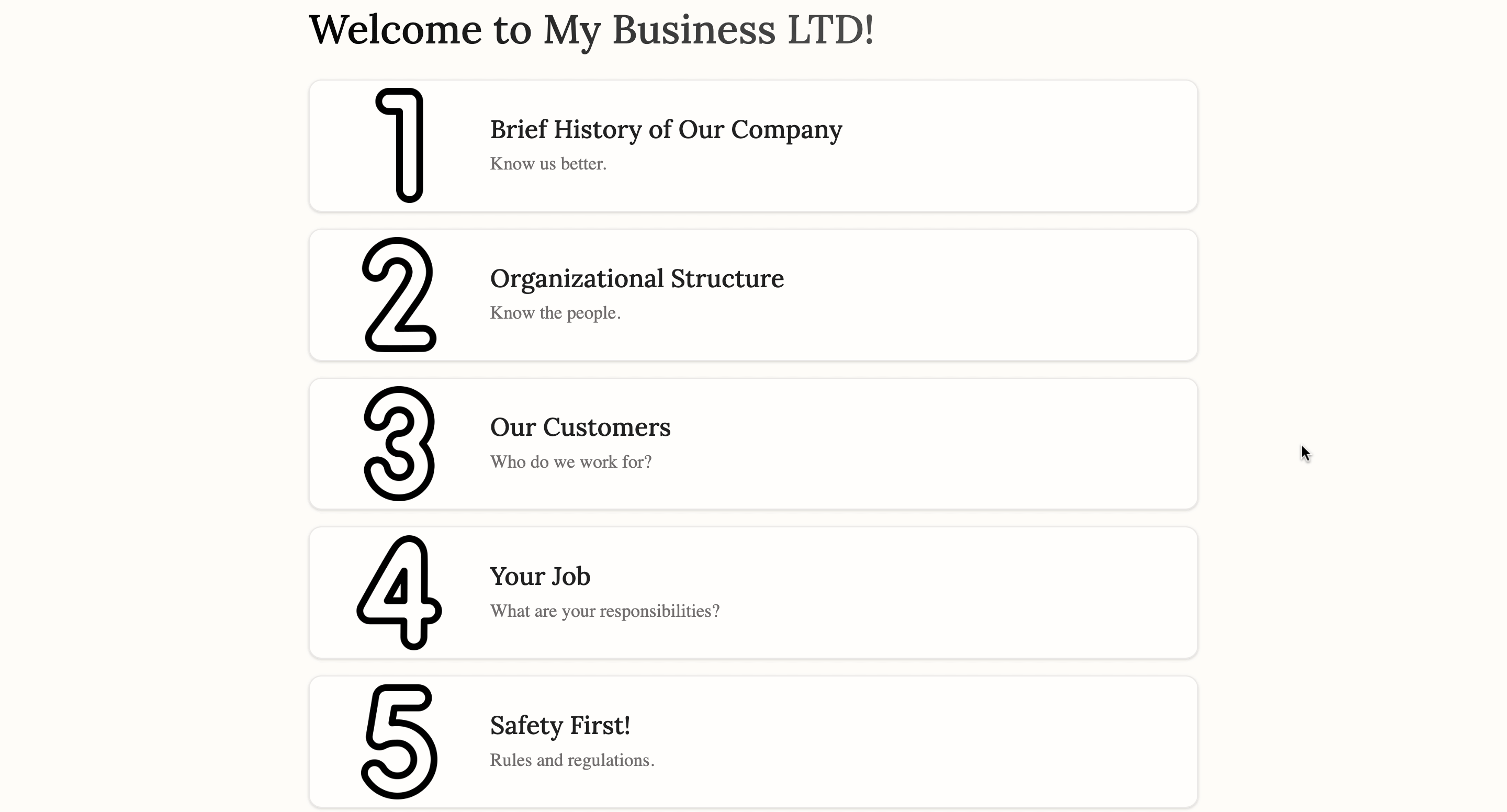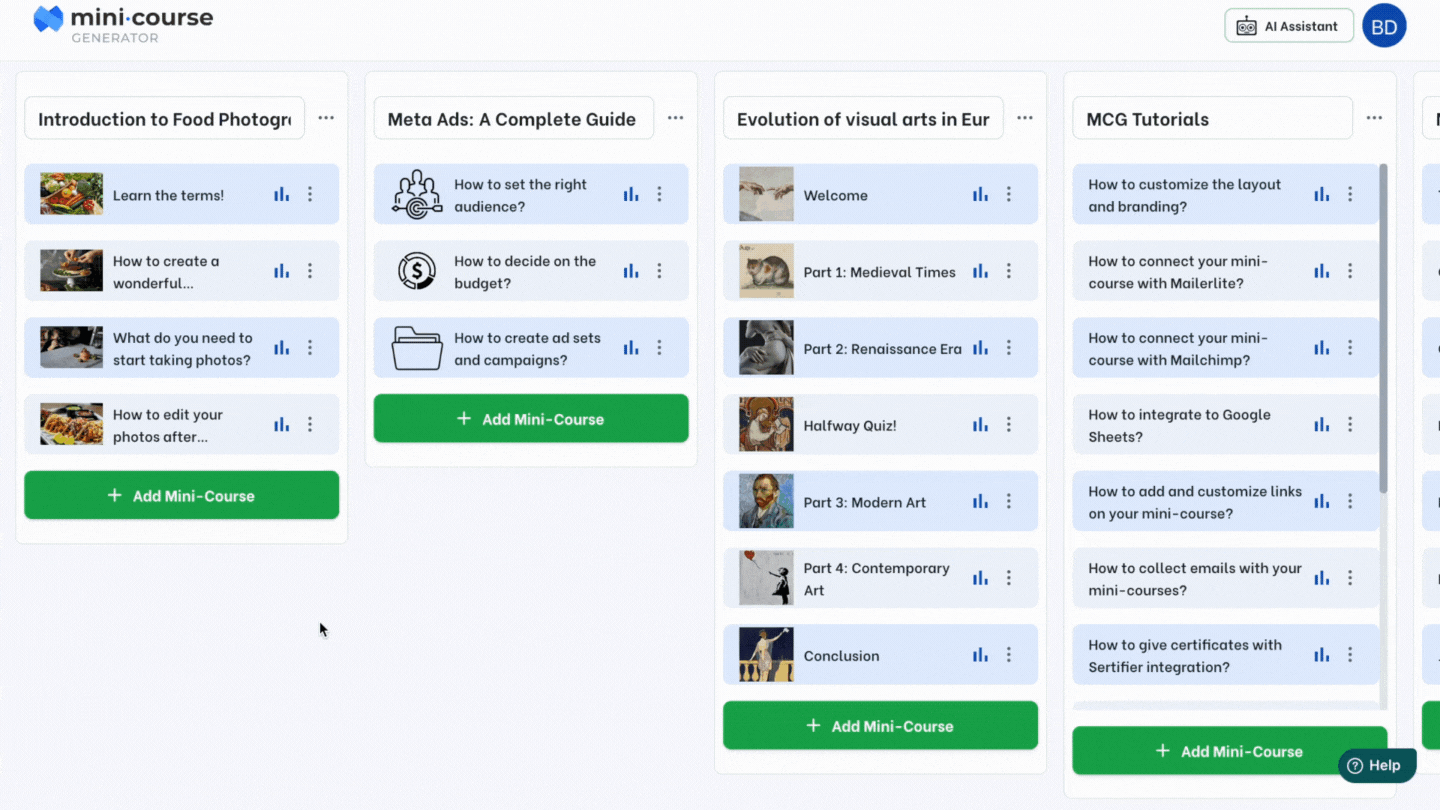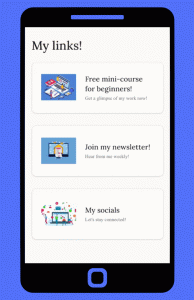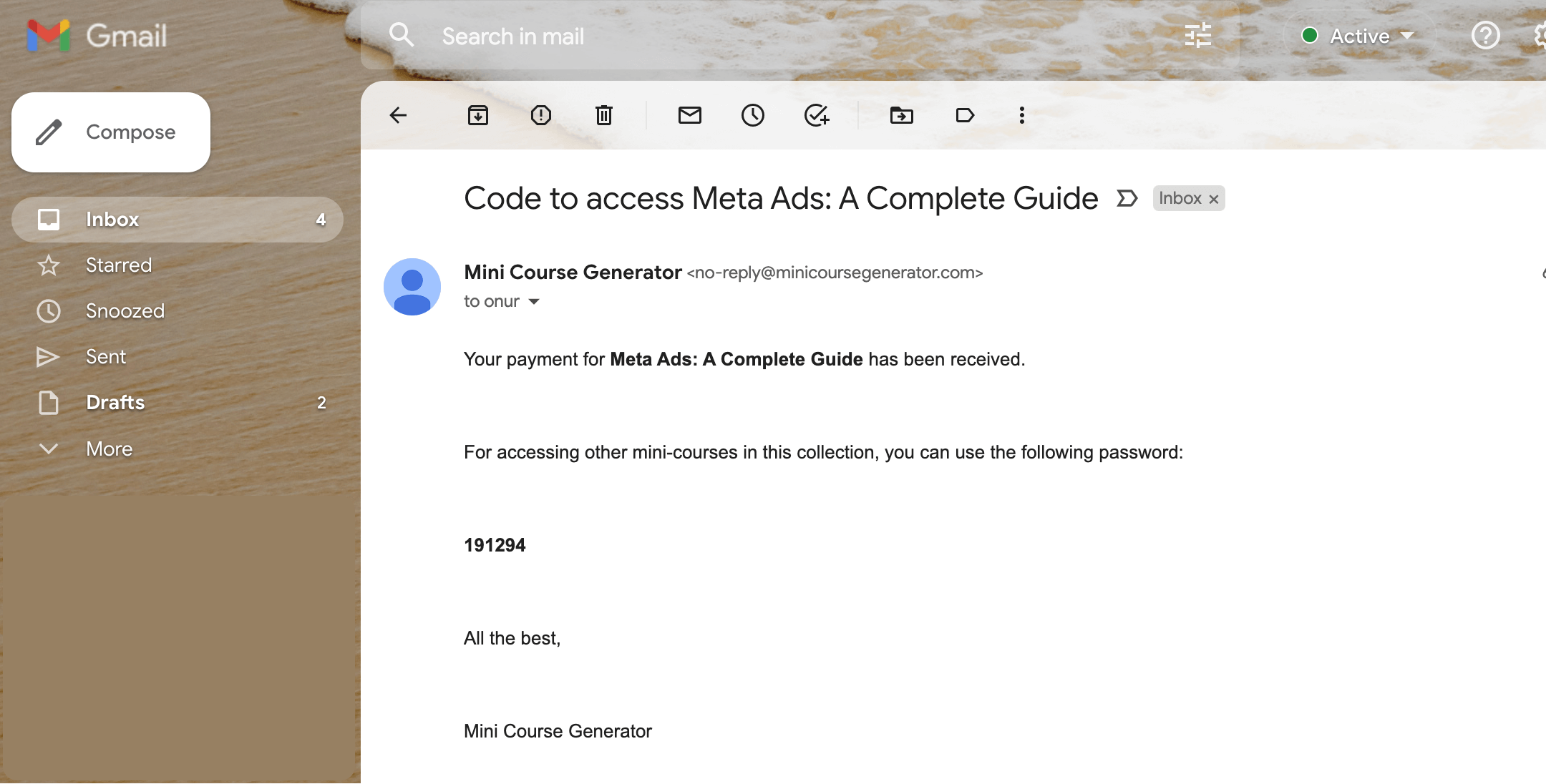Mini-courses are wonderful tools to share bite-size educational material. With a micro-learning journey, you can grab the attention of your leads, nurture your community, raise curiosity among your target audience, create a willingness to start something bigger, and even get paid for your work.
Collections of mini-courses are even better to present your content in an organized way, build an educational journey with a meaningful order, and create a bundle of relevant materials for various purposes.
End users do not leave the collection page to view your mini-courses, and they explore your content following the index you set. Hence, the user experience is more wholesome and satisfying.
You can even form a landing page or a link-in-bio page with your mini-course collection! If you sell your know-how, charging once for multiple mini-courses is so much easier with collections.
You can share your mini-course collections just like your mini-courses!
Here are some use cases of collections that will work for your special needs!
Group and create bundles of mini-courses!
Some creators present content in multiple fields and target customers with various needs. In this case, it is easier to gather mini-courses with similar content base together and share them all in a collection rather than listing links separately.
Collections let the creators group and display their mini-courses in an organized way.
Example #1: You are a digital marketing strategist, and you want to group your mini-courses under the following collections:
- Meta Ads: A Complete Guide
- Google Ads: A Complete Guide
- Influencer Marketing: A Complete Guide
Your mini-courses under the first collection will look like this:
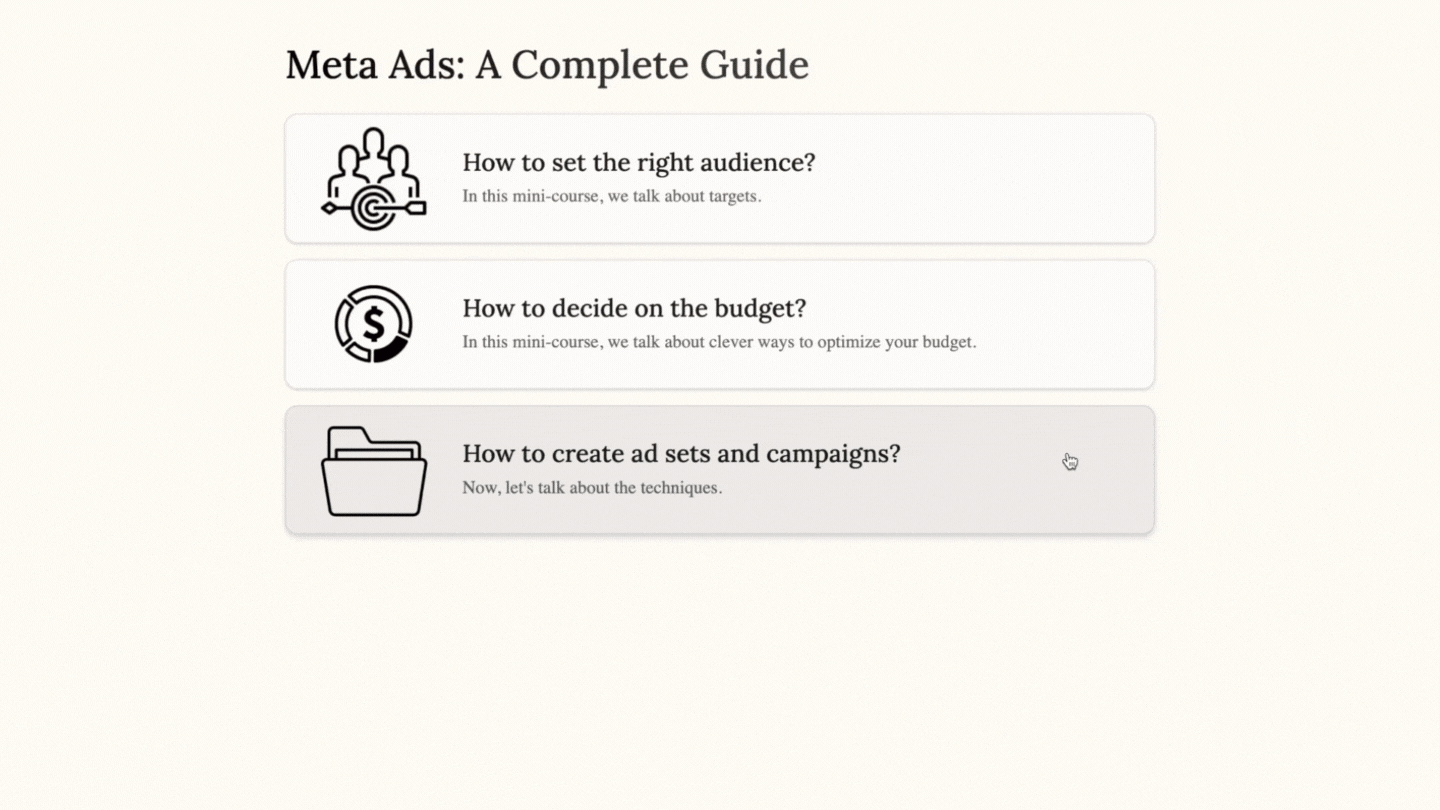
Example #2: You teach food photography, and your customers have various knowledge levels. So, you want to group beginner’s level mini-courses in a special collection like this:
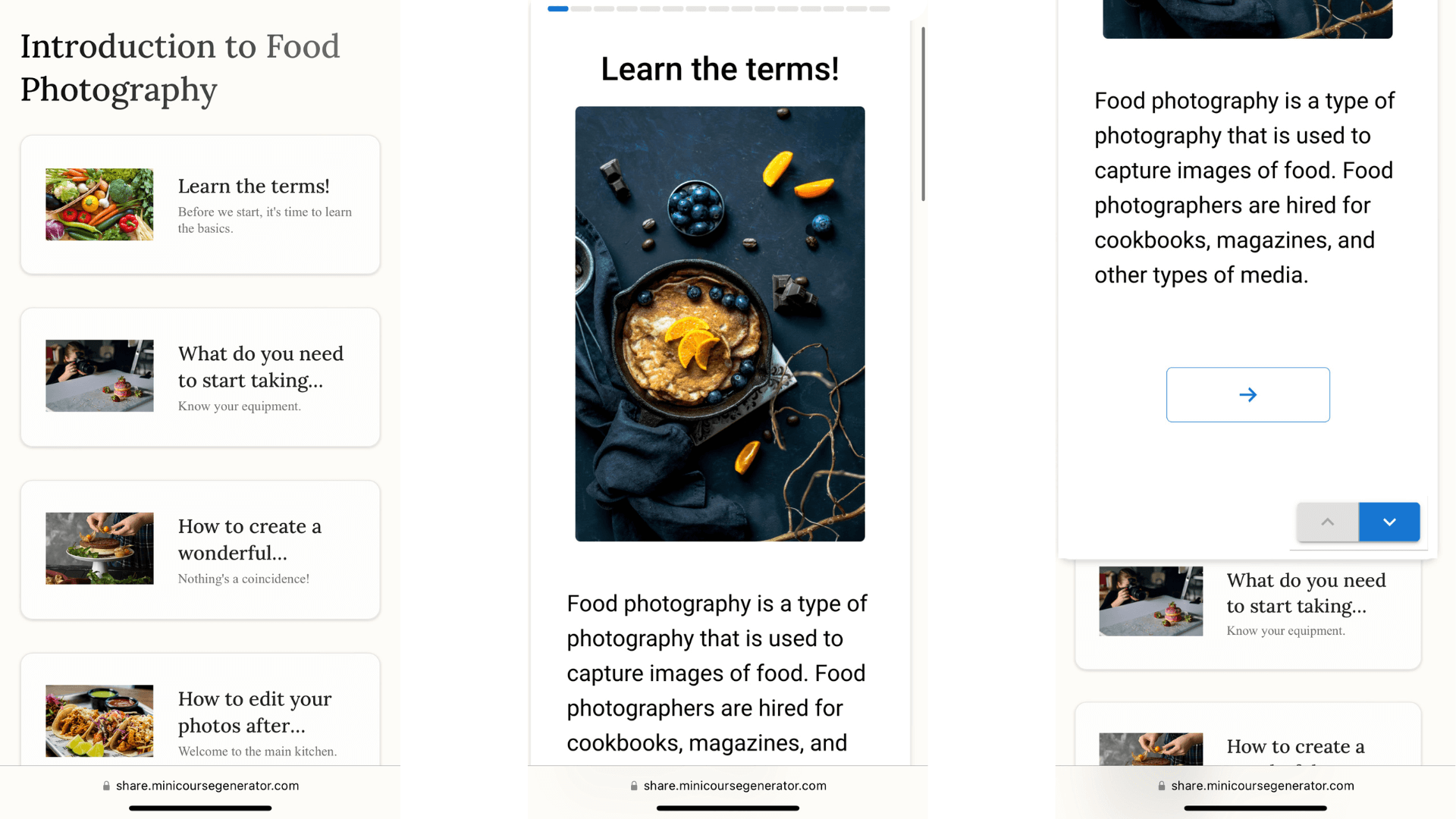
Present an ordered series of mini-courses!
Sometimes order becomes especially important for better understanding! In this case, you can create a series of mini-courses with your collections.
Example #3: You are an art historian and have mini-courses about “Evolution of visual arts in Europe through ages.” Just like the collection below! Under this collection, the courses are listed in chronological order.
Hint: If you want to ensure that your audience follows the right order, use “password protection” in the beginning of each part! The password will be hidden in the mini-course above.
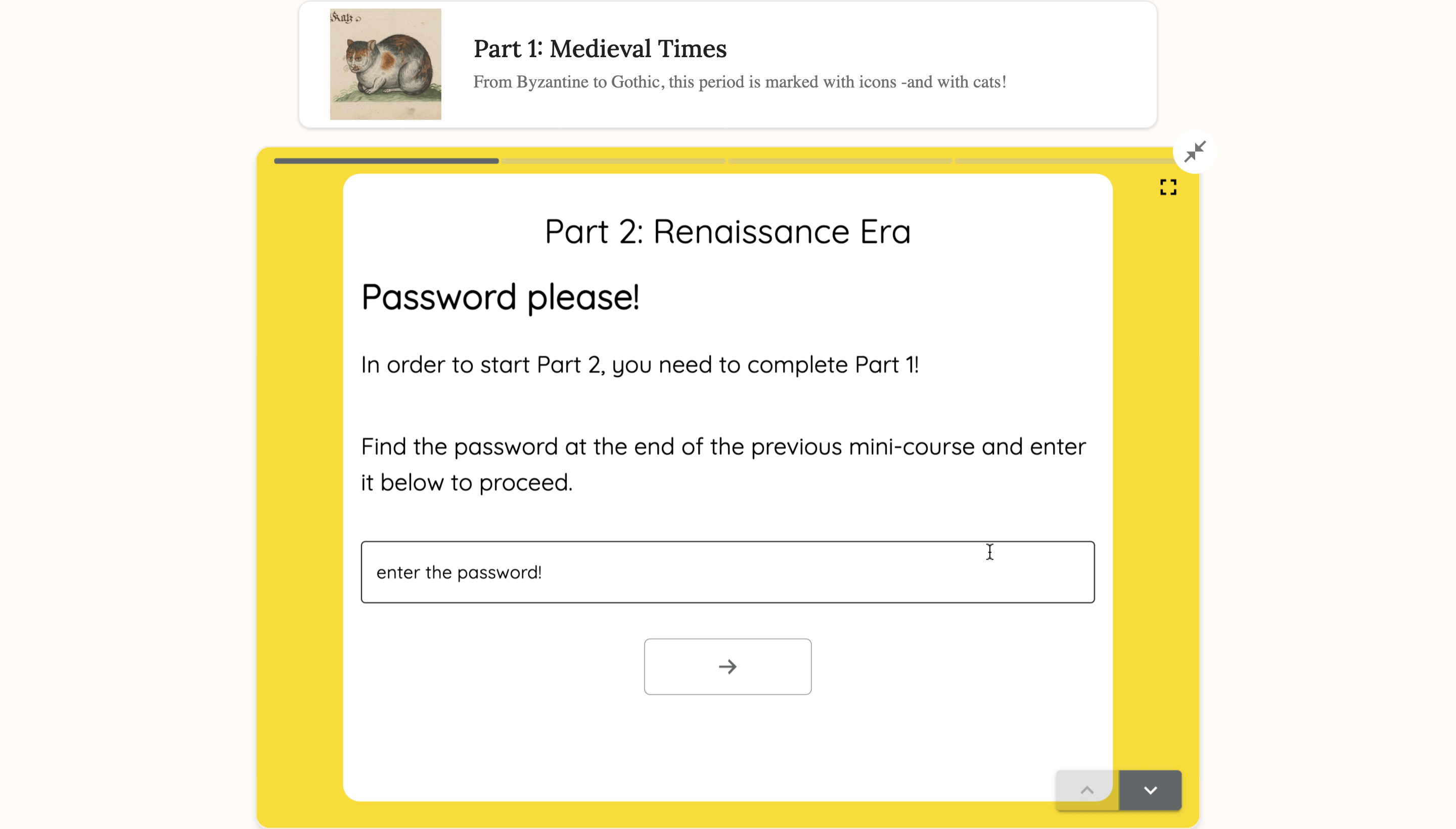
Example #4: You are a human resources specialist, and you want to build an onboarding program for new employees like this:
Collections can be formed and edited on your admin dashboard super easily.
So, if you want to add a new mini-course to a collection, remove a mini-course from a collection or change the sequence of the listings, it can be done in seconds.
Build a landing page with loaded content for your visitors.
You can use collections as your landing page!
End-users do not leave the collection page while exploring the mini-courses. Hence, presenting mini-courses via collections creates a better user experience.
Example #5: You want to present your mini-courses on your link-in-bio tool but keep your customers in the same window.
Like the above example, you can categorize your materials and present everything in a simple and organized way.
You can create custom domains and share your collections with your customized links, too.
Charge once for multiple mini-courses.
If you sell an educational program as a whole, it can be cumbersome to charge small amounts for each mini-course. With collections, creators can charge the whole sum in the beginning.
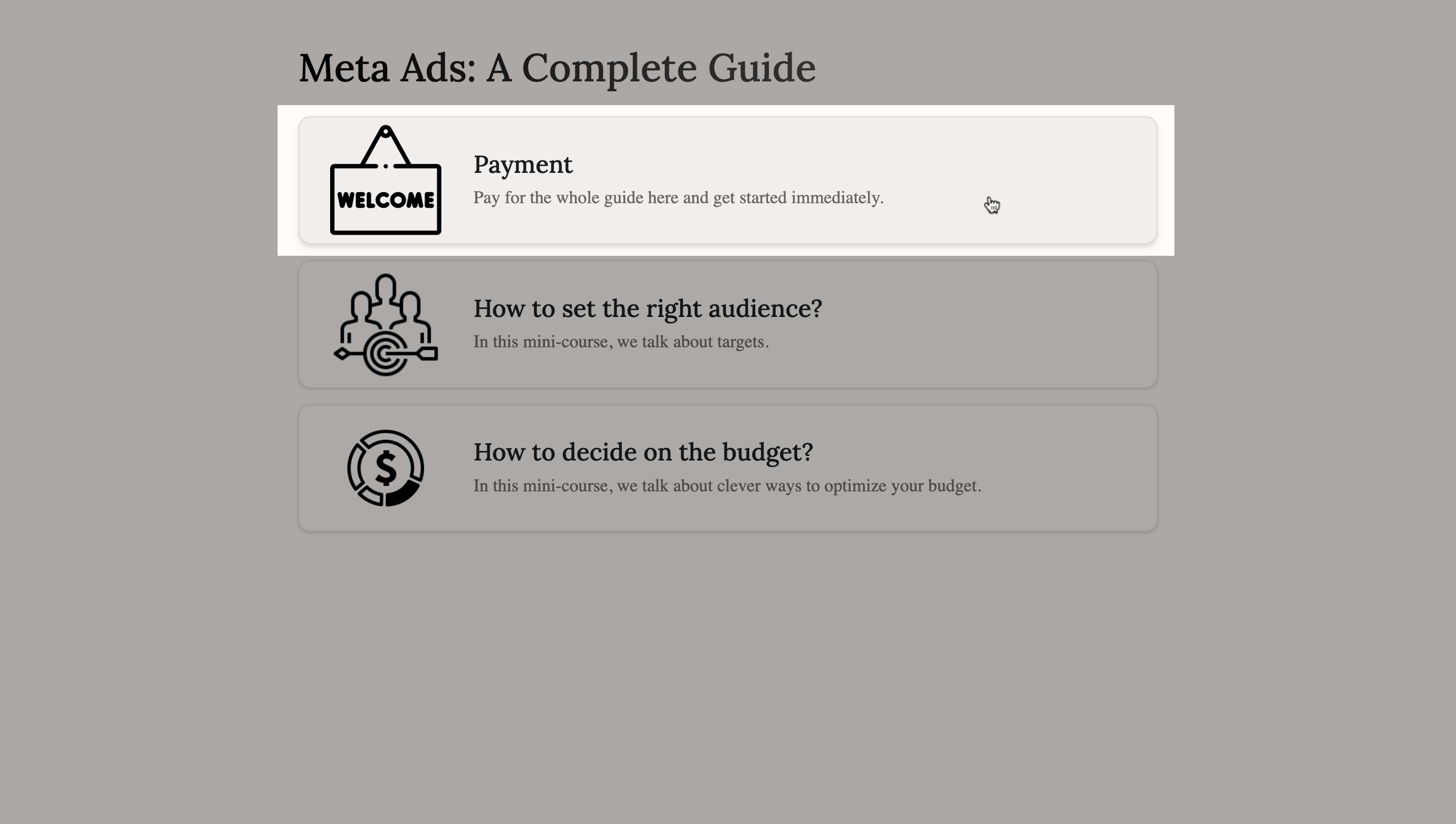
Mini Course Generator has direct integration with Stripe for easy payment.
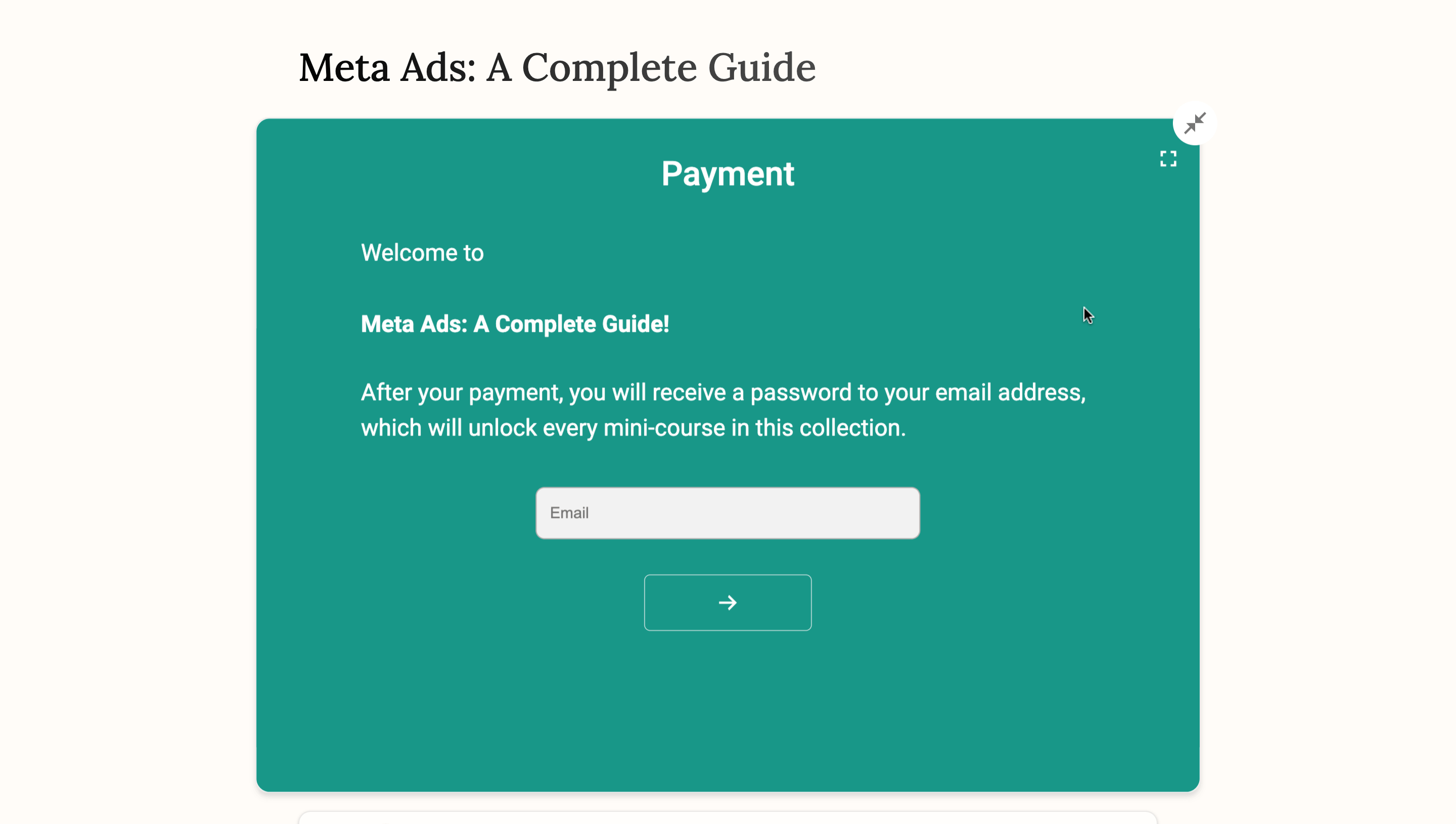
After the payment, you can gate access to the mini-courses under collections with only a password, which will be sent via email.
You can pick one of the above use cases or craft them according to your marketing needs to benefit from a more engaging approach. Click here to learn more about how to create and present collections.

